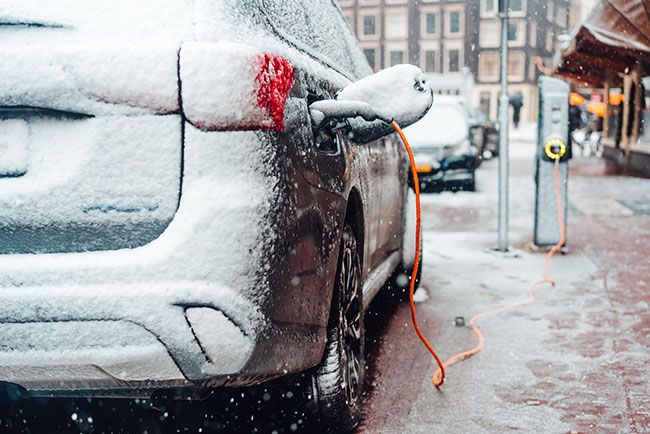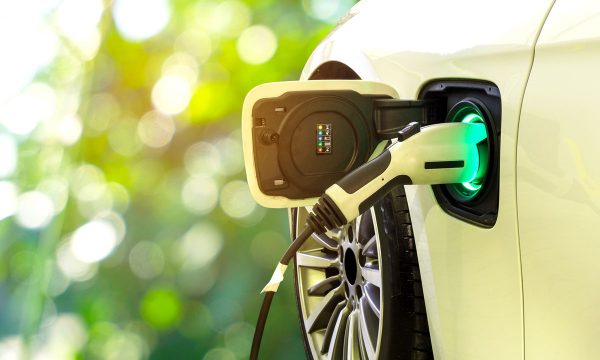The myth that electric vehicle batteries are winter-shy is just that — a myth.

Most Canadians have said or heard the words: “My car won’t start, it’s too cold, the battery is dead.”
That’s why anyone that has experienced a dead battery on a cold day is unlikely to think electric vehicles (EVs) are a match for Canadian winters. Yet, cold temperatures don’t affect EVs the same way as internal combustion engine (ICE) vehicles. In fact, well-designed EVs can thrive in cold climates.
I’ve had my share of first-hand experiences with EVs in extreme winter conditions. Not only as a Canadian EV driver myself, but also from my past experience managing the design and construction of electric snowmobiles — one of them having once been considered to be the world’s “most northerly EV.”
How cold temperatures affect EVs
For dealership staff to properly inform their customers, set expectations, and provide a positive experience — ultimately acquiring repeat business — the first step to take is to understand how cold temperatures affect EVs.
Most EVs are equipped with the same starting battery as ICE vehicles — a 12V lead-acid battery. Although both use the 12V battery for starting purposes, EVs barely demand any power as they only use it to power up some electronics. Which is nothing compared to an ICE vehicle trying to crank a solidly frozen set of pistons in oil that has the viscosity of molasses.
EVs for the most part can instantly and reliably start on cold winter days, while ICE vehicles with weak batteries may not. Does this mean that EVs are immune to cold temperatures?
The answer is no.
Cold weather doesn’t only impact a vehicle when you need to start it. It also has an impact on a vehicle as it’s being driven. Natural Resources Canada (NRCan) and the U.S. EPA estimate that an ICE vehicle’s fuel economy in an urban commute goes down 12 to 23 per cent when temperatures drop from 25˚ to -7˚. Therefore, one cannot drive as far on the same tank of gas in the winter than what was possible in the summer.
Similarly, cold weather impacts the range of an EV. A study by the AAA confirms that certain EV models see a drop in their equivalent fuel economy of more than 40 per cent. Interestingly, this finding has little to do with the performance of batteries in the cold. It turns out, the reduction stems from the fact that EVs are too efficient.
Here’s why: gas engines are relatively inefficient at converting energy stored in gasoline into motion. Energy that doesn’t get transformed into motion is what generates engine heat; a complete waste in the summer, but a useful by-product when channeled into the cabin on cold days.
On the other hand, EVs are so efficient that they don’t produce enough waste energy to heat the cabin. Therefore, to heat the cabin, EVs must use up battery energy which could have otherwise propelled the vehicle. How much? In the AAA’s lab test, HVAC usage contributed to the reduction in equivalent fuel economy by up to six times more than all other factors.
This lab result can be observed in the real-world. Early on, most EVs used resistive heating in their HVAC system (equivalent to a home baseboard electric heater). But steady advancements in technology have transitioned automakers to employ heat pumps in the HVAC systems, generating impressive results.
In March 2020, the Norwegian Automobile Federation (NAF) conducted an extensive real-world range test in winter conditions to compare the driving distance of twenty EVs with their theoretical range. All of the top performers had one thing in common: a heat pump in the HVAC system.
Unequivocally, the top performer saw its real-world range drop by less than 10 per cent compared to the theoretical range. Meanwhile cars without a heat pump saw their winter driving range drop by up to 30 per cent compared to the vehicle’s theoretical range.
As the years go by, one can expect advanced heat pump technology to make it into most EVs sold in Canada. So, with winter right around the corner, Canadian dealerships can reassure buyers that an EV will definitely start when their neighbour’s ICE vehicle may not.
In parallel, dealers can also learn more about the specific vehicles they have in stock to see which models and trims have a heat pump — and which don’t, in order to properly inform customers and gradually dispel the myth that EV batteries don’t like winter.











